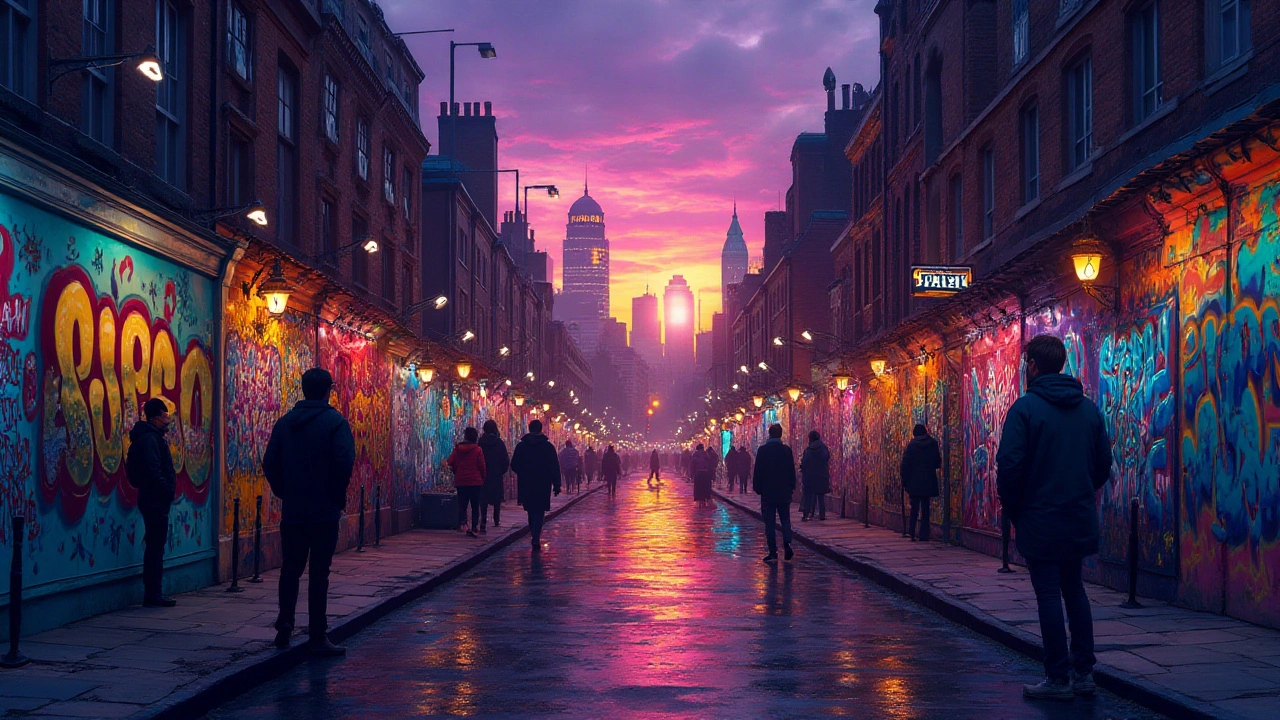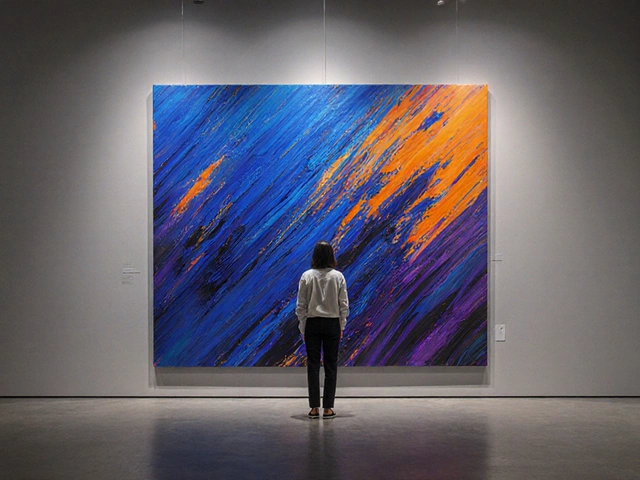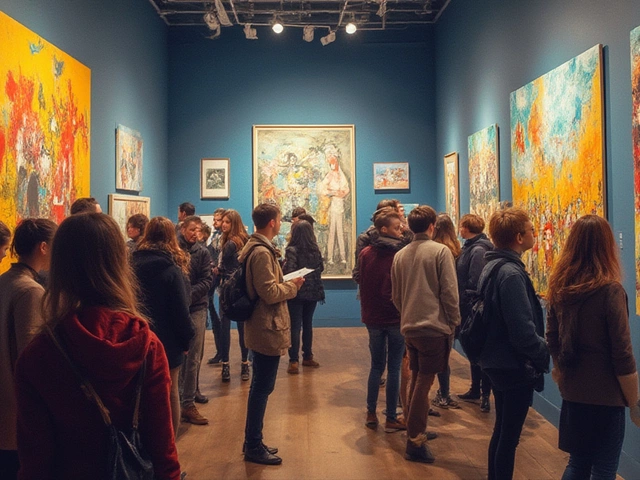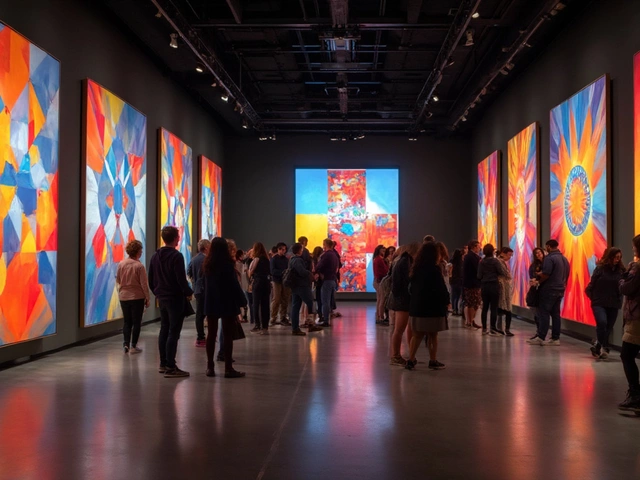Graffiti has sparked debates for decades, splitting opinions on whether it should be celebrated or condemned. From the vibrant displays that enliven cityscapes to contentious tags marking private property, it raises questions of ownership and expression.
The fascination with graffiti lies not only in its aesthetic appeal but also in its ability to tell stories of communities and cultures. As city dwellers encounter these vivid images on their daily commutes, one might wonder: Is graffiti merely an artful rebellion or a legitimate art form?
This exploration dives into graffiti's inception, its role as a cultural medium, and the persistent tug-of-war between celebrating it as urban art and dismissing it as mere defacement. Join us on this journey through the urban corridors where spray cans meet creativity, challenging perceptions one wall at a time.
The Roots of Graffiti
The journey of graffiti begins far earlier than the neon-lit street corners of modern cities. Our ancestors, dating back to ancient civilizations, were the pioneers of what we now dub as street art. The word 'graffiti' itself has roots in the Italian language, deriving from 'graffio', which means 'a scratch'. This traces back to the carvings and scribblings found in ancient Roman and Greek sites. Imagine, if you will, a bustling ancient Rome, where onlookers pause to decipher political commentary etched upon city walls, akin to a primitive public Twitter.
Fast forward to the 20th century, the modern flair of graffiti made a resounding entrance during the turbulent decades following World War II. It was around this time that youth in Philadelphia and New York started adorning subway cars and alley doors with an array of colorful tags. These tags, often seen as personal signatures, marked the forefathers of the graffiti subculture—'Cool Earl' and 'Cornbread' were among its initial influencers, reshaping urban landscapes with rebellious expressions.
As we moved into the 1970s, graffiti experienced an evolutionary phase, transitioning from mere scrawlings to intricate, larger-than-life murals. The streets became canvases, where diverse styles flourished, and graffiti took on new dimensions. Artists borrowed influences from various cultures, merging them into an explosive visual language of their own. Jean-Michel Basquiat and Keith Haring rose as influential figures, carrying graffiti from the streets into the art galleries, challenging the existing norms of acceptable art.
Despite its often rebellious undertones, graffiti has consistently served as a voice for the marginalized—a voice strong enough to shake foundations. In the vibrant turmoil of New York City's streets during the 1980s, hip-hop emerged hand in hand with graffiti. This cultural revolution promoted themes of unity, empowerment, and identity. The two art forms not only shared the spotlight but also elevated each other, leaving an indelible mark on global culture.
In the grand tapestry of graffiti's history, England's own Banksy stands out as a modern-day legend, embroiled in the delicate balance between artistry and anarchism. His works provoke thought, often addressing contemporary social issues with a sharp wit that has captured worldwide attention. On the debate that surrounds this art form, Banksy himself once stated, 'Graffiti is one of the few tools you have if you have almost nothing.'
The roots of graffiti are thus as deep as they are sprawling, from the ancient inscriptions that withstood civilizations to the audacious spray paints that redefined urban settings. It's a testament to human instinct to leave behind marks, to voice thoughts that transcend pages and time, and to push boundaries of what constitutes art. As graffiti navigates into the future, its foundations echo the stories of generations past, bridging the years with colors, stories, and expressions uniquely its own.
Cultural Significance
From the bustling streets of New York City in the late 1960s to the sprawling urban landscapes of Berlin, graffiti has long served as a poignant reflection of the community's identity. It is more than just a splash of color against a gray wall; it’s an expressive medium that captures the thoughts, struggles, and aspirations of those who feel unheard by mainstream society. The rise of graffiti as an art form is intrinsically tied to subcultures from hip-hop to punk rock, each leaving an indelible mark on urban environments. Artists have carved out a niche, turning what was once considered illegal scribbles into symbols of revolt and self-expression.
Historically, graffiti has been a tool for the marginalized, a voice echoing the cries of those on society's fringes. During times of political strife or social upheaval, the walls become canvases for messages of protest and calls for change. In this way, urban expression through graffiti has become a timeline that reflects significant socio-political shifts. For instance, the Berlin Wall offered a broad canvas for protest against division and a hope for unity. Street artists worldwide acknowledge the role of graffiti as a catalyst for conversations that dwell in the uncomfortable yet necessary arena of societal discourse.
The narrative engraved in graffiti serves as a bridge connecting various demographic groups. Community murals, for example, celebrate cultural diversity, depicting heroes and local stories that resonate with a broader audience, fostering neighborhood pride. With the inclusion of vibrant hues and thematic depth, these murals depict stories that might otherwise remain untold. Research has indicated that areas enriched with street art often experience increased community engagement and tourism, turning them into hotspots of cultural immersion.
It's worth noting that not every piece of graffiti is a welcome addition to the urban fabric. The tug of war between appreciation and annoyance is part of a larger dialogue about public space ownership. Some cultures view graffiti as a necessary beauty, while others see it as an eyesore in the fight for maintaining clean streets. In a quote by Banksy, the elusive yet revered graffiti artist once remarked,
“Graffiti is one of the few tools you have if you have almost nothing. And even if you don’t come up with a picture to cure world poverty you can make someone smile while they’re having a piss.”Here, Banksy encapsulates the duality of graffiti's cultural impact—a simple act of rebellion that can instigate smiles and thought, rather than just ire.
The dichotomy between art and vandalism continues to fuel discussion, and while some regions embrace and legalize street art, others enforce stricter regulations. This indicates the cultural significance of graffiti as more than a mere act of defiance, but rather, as Robert Macdonald implies in his book, "Graffiti Lives", it is "an interaction within a community and a brave attempt to challenge societal restrictions however minor that contribution may seem." Understanding this context ensures that audiences can appreciate not just the aesthetic, but also the cultural dialogue graffiti compels us to continue.
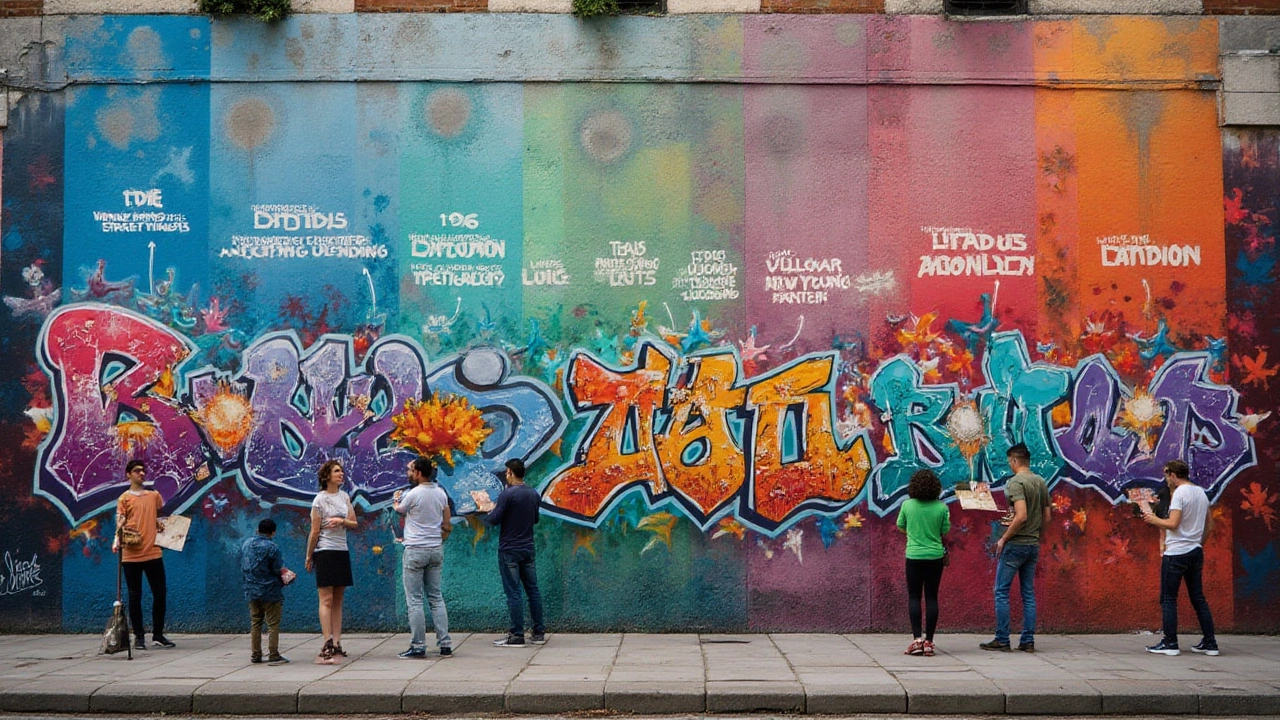
Graffiti: Art or Vandalism?
The debate on whether graffiti constitutes art or vandalism is as colorful and dynamic as the graffiti that graces, and sometimes defaces, urban walls worldwide. Many cities are rich with visual stories spray-painted on their brick canvases, offering profound insights into local cultures. While some people view graffiti as an unlawful act of property defacement, others see it as a form of artistic expression and social commentary. This divergence in perception brings forward a range of perspectives that underscore the need to approach street art with a nuanced lens.
Graffiti has a storied history that harks back to ancient times when it was used for political activism and expression. It emerged prominently in modern subculture during the 1970s in New York City, spreading messages from marginalized groups swamped by societal inequalities. Not only does graffiti reflect the grit of urban life, but it also carries the potential for spontaneous art-like beauty. In this context, it is vital to understand the unique way graffiti merges artistic intent with raw, unsanctioned creativity. Renowned street artist Banksy articulates this dichotomy:
Art should comfort the disturbed and disturb the comfortable.
One cannot ignore the economic implications of graffiti. Cities spend substantial resources to clean unwanted markings from their public and private properties, indicating a financial burden on municipal budgets. Despite this, places like Berlin and Lisbon welcome their walls as canvases, using street art to drive tourism and boost local economies. Establishments actively collaborate with graffiti artists, turning potentially transient works into permanent urban installations. These projects foster community pride and even solve urban planning challenges by revitalizing derelict areas with colorful engagements.
The above paradox reveals that graffiti operates in two divergent spheres: one illegal and sometimes menacing, the other hailed for its creativity and connection to cultural identity. Often, this line blurs depending on the societal context and intention behind the work. Legal projects have managed to absorb graffiti into the art world, with pieces being showcased in galleries and fetching high prices at auctions. Despite its contentious nature, graffiti often compels observers to question the boundaries between public freedom and property rights. It consistently challenges us to reconsider the urban landscape and our role in shaping its aesthetics.
However, the conversation involving graffiti as either art or vandalism remains fraught with complexities. As cities struggle with the impulse to control and the need to express, street art continues to provoke discussion. As vibrant or controversial as it may be, graffiti remains an undeniable facet of human expression, revealing the necessity of balance between civic order and the free voice of the streets.
The Future of Graffiti
Graffiti has stood as a beacon of urban expression across decades, reflecting societal shifts and cultural vibrations. However, as we stand on the cusp of rapid technological advancements and evolving cultural dynamics, the future of graffiti hangs in a delicate balance. Artists today grapple with heightened surveillance and increased regulations, challenging the core of graffiti as an act of rebellion. On the flip side, technology, such as digital mapping and augmented reality, opens innovative avenues for artists to play with public perception, enriching urban landscapes with new layers of meaning.
The rise of street art festivals exemplifies the evolving acceptance of graffiti as an art form. In a 2023 report by the Global Street Art Agency, more than 100 cities worldwide hosted street art events, fostering spaces where artists and communities meet in harmony. These festivals highlight the transformative power of graffiti, providing emerging artists with a platform to showcase their skills and community narratives. Yet, the transition from unauthorized street expression to sanctioned art fest can provoke controversy among purists who argue that graffiti's soul lies in its spontaneous, unsanctioned nature.
"Graffiti is a game we play with space and perception," noted Banksy, the elusive street artist, regarding the delicate interaction between art, space, and authority.
Another crucial facet is graffiti's relationship with technology. Recent years have witnessed a paradigm shift, where social media acts as a gallery space and digital creation tools forge new playgrounds for street artists. The advent of digital murals and interactive projections transforms how we perceive public art, adding dynamic, changing elements to cityscapes. Street art aficionados and purists alike debate whether these digital elements augment or diminish the innate qualities of traditional aerosol expressions. While some argue technology broadens accessibility, enabling urban expression across the globe, others caution against losing graffiti's tangibility, its raw connection to the surface it inhabits. Balancing these elements will shape the trajectory of graffiti in years to come, influencing legislative approaches and cultural interpretations.
Environmental consciousness is another substantial force influencing graffiti. As the world gravitates towards sustainability, artists must navigate material expenses with ecological impact. Sprays and paints once dominated the scene, but today, artists lean towards eco-friendly alternatives that promise minimal environmental harm. This need harmonizes with societal shifts and helps grow a community invested in preserving not just their art, but their planet too. As graffiti maturity focuses on environmental stewardship, its resonance as an urban act of defiance may gradually tether to a message of responsible creativity and eco-advocacy.
The Role of Institutions
Formal institutions now recognize the potential graffiti holds in reshaping urban identities. More museums and galleries display graffiti-affiliated works, while educational programs offer insights into its history and techniques. These changing tides mark a juncture where society could potentially chart brighter, inclusive pathways for street art, reimagining it as a bridge between subculture and mainstream. Such institutional support may provide sustainability to a form historically characterized by its ephemerality and fluidity.In essence, the future of graffiti teeters between its rebellious origins and institutional acceptance. Whether it finds a way to blend these dualities or veers towards one, graffiti will undeniably continue coloring the narrative of urban landscapes and fostering the pulse of public spaces. This unfolds as artists dissect cultural taboos, confront future challenges, and re-envision graffiti not just as an art form, but an enduring, irrevocable dialogue with our cities.
